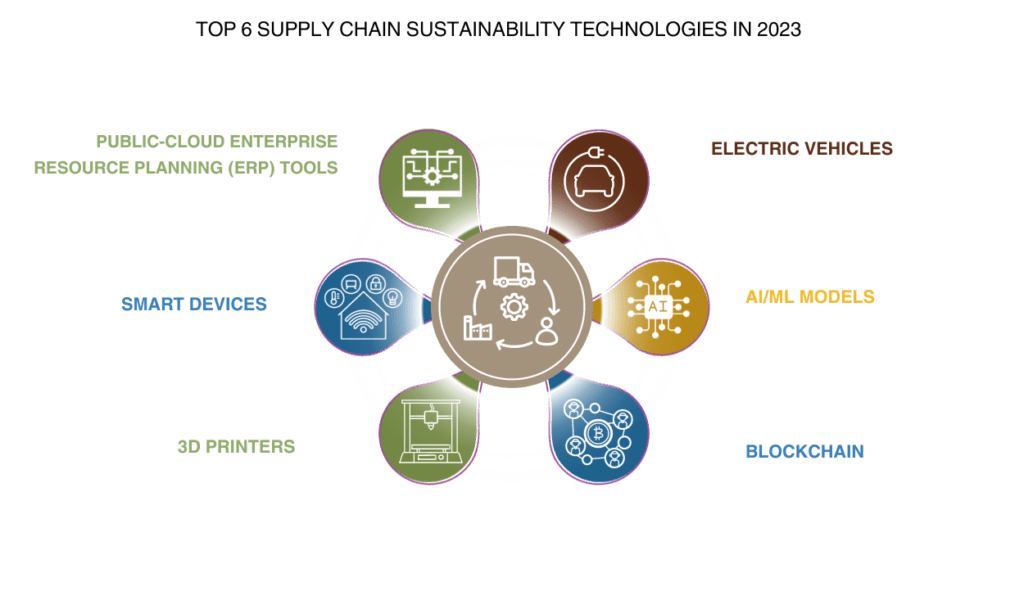
Recently, stakeholders have intensified their demands for companies to exhibit a heightened commitment to environmental conservation and social accountability. This shift coincides with the strengthening of the financial argument for sustainable business practices each year. For numerous enterprises, the spotlight has turned to supply chains due to their substantial resource and economic utilization, often resulting in avoidable waste. Consequently, supply chain sustainability has emerged as a pivotal objective for corporations.
The supply chain represents the intricate path that raw materials, components, and products traverse from their initial stages to their eventual assembly and delivery to customers. Within this network, various categories of stakeholders play distinct roles, including producers, suppliers, manufacturers, logistics providers, supply chain managers, retailers, and end consumers.
According to UNIDO, supply chains are essential to trade, and trade is critical to job creation. Nonetheless, in 2023, they must be sustainable. Four hundred fifty work in global supply chains, and approximately 190 million are women. These jobs include working in the factories, farms, and packing houses that supply the world’s apparel, goods, and nutrition and promise them financial autonomy.
However, the reality for millions of employees is not what it seems to be. Their working conditions include excessive hours, often in challenging and unsafe conditions, and insufficient wages to make ends meet. Three of the multinational corporations that were the subject of research at Harvard and published in the Harvard Business Review were not adhering to the standards that the MNCs expected them to. Another research conducted by EY about sustainable supply chain approaches at 525 large corporations across Argentina, Brazil, Canada, Mexico, and the United States (US) showcased that while many leaders have long-term sustainability goals for their supply chains, few have the visibility, technology, and ample programs in place to gauge their progress.
Under no circumstances, the exploitation of people, labor, and the environment must be the foundation of the global economy. Just global business practices must be adopted, a procedure that requires companies to respect and prioritize human rights and environmental standards.
Thus, supply chain sustainability encompasses the endeavors of companies to evaluate the ecological and social consequences of their products as they travel the supply chain, commencing with the acquisition of raw materials and concluding with delivery. The objective is to diminish adverse environmental effects stemming from factors such as energy consumption, water usage, and waste generation, all while fostering a favorable influence on individuals and communities situated within and around their operational sphere. These considerations supplement conventional corporate priorities about financial performance and profitability.
Traditional supply chain management primarily centers on optimizing the speed, cost, and dependability of operations. In contrast, sustainable supply chain management incorporates the additional objectives of promoting environmental and social values. This management procedure entails confronting global challenges such as climate change, water sustainability, deforestation, human rights, equitable labor practices, and corruption.
A few good practices that can be implemented for ESG Supply Chain Management are the following, according to GEP:
Businesses across various sectors face mounting demands to comprehend and address frequently opposing risks within their supply chains. This is essential for enhancing resilience, aligning with the expectations of evolving customer preferences, and establishing a responsible supply chain framework regarding Environmental, Social, and Governance factors, as well as adhering to a growing array of regulatory requirements.
According to McKinsey and Company, there are four different supply chain shocks that are differentiated based on their impact, lead time, and frequency of occurrence. These are the following:
The COVID-19 pandemic has inflicted the most significant disruption to supply chains recently. Nevertheless, a 2022 survey conducted by EY found that 80% of the companies focused more on environmental and sustainability goals (ESG) because of the COVID-19 pandemic. Nevertheless, a considerable number of organizations currently do not possess the necessary business rationale, comprehensive end-to-end visibility of their supply chain, or the requisite technology to achieve their sustainability goals in the supply chain.
The primary drivers for enhancing supply chain sustainability included cost reduction, adherence to compliance standards, and growing pressure from both the workforce and suppliers. As investors increasingly seek insight into a company’s ESG performance, employees express a preference for organizations that embed sustainability in their core mission. Simultaneously, customer demands for sustainability are on the rise, and various countries are imposing more stringent regulations. As a result, sustainable supply chain practices are undeniably becoming a permanent fixture in the business landscape.
The COVID-19 pandemic acts as a reminder that although exceptional events are infrequent, organizations should factor in such possibilities when making decisions and strategic plans. For many organizations, this entails extending the traditional emphasis of supply chain executives from cost control and capital utilization to a heightened focus on service and responsiveness. Thus, in the future, supply chains must possess the qualities of adaptability, versatility, efficiency, resilience, and a robust digital network to enhance visibility.
Although businesses encounter numerous difficulties in their logistics and supply chain activities, there are ample chances to not only diminish their ecological footprint but also lower expenses. Given that many initiatives aimed at reducing emissions are centered on enhancing fuel efficiency, sustainability also has a favorable effect on financial performance.
For a company to be sustainable, some of the following practices could be adopted:

In conclusion, embracing a sustainable supply chain isn’t just a choice; it’s a strategic imperative for businesses aspiring to be resilient and cost-efficient in an ever-changing world. Supply chains that meet current ESG criteria can reduce a company’s carbon footprint as well as reputation risks while fostering innovation and securing resources for the future. ESG data is evolving into a determining factor and an excellent opportunity for companies worldwide. In the face of global challenges such as climate change, pandemics, and social upheaval, businesses with sustainable supply chains are better equipped to adapt, survive, and thrive.
According to Supply Chain Digital Magazine, the Top 10 companies with the most sustainable supply chains for the year 2023 were Amazon, Microsoft, Unilever, Apple, IBM, Nestle, Deloitte, Accenture, Oracle, and Jonson & Johnson.
In the pursuit of sustainable supply chains, the importance of education and skills cannot be overstated. The success of any sustainable initiative within a company relies heavily on the knowledge and expertise of its stakeholders. When employees, suppliers, and other key partners lack education and skills related to sustainable practices, the implementation of eco-friendly technologies, ethical sourcing, and social responsibility becomes a daunting task.
At EcoSkills, we are committed to providing training programs and fostering a learning environment to help companies empower their stakeholders to actively embrace sustainable practices.
This, in turn, not only ensures the resilience and longevity of the supply chain but also contributes to a more sustainable future, where businesses play a vital role in mitigating environmental challenges and promoting social well-being.
